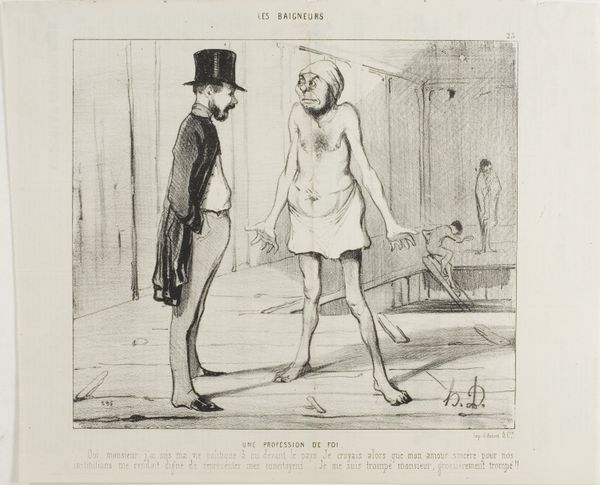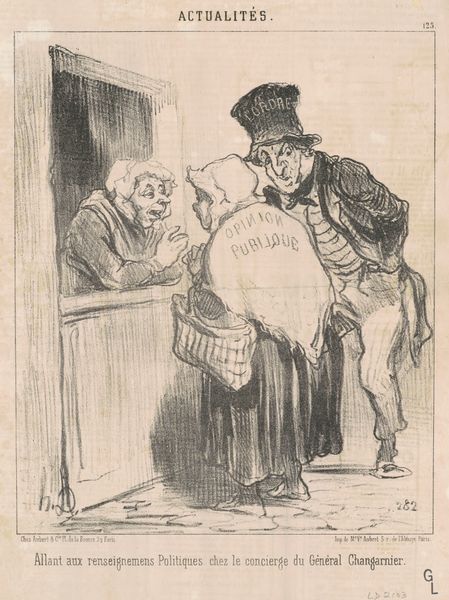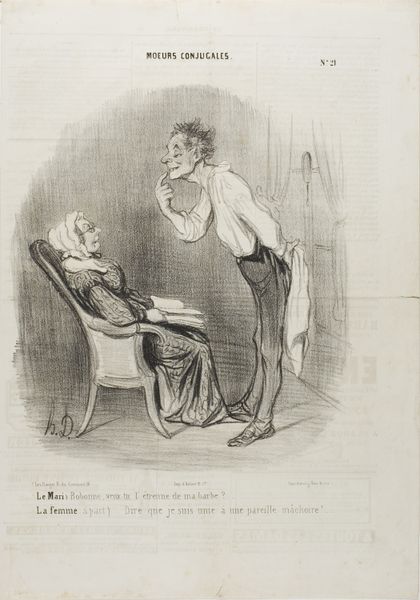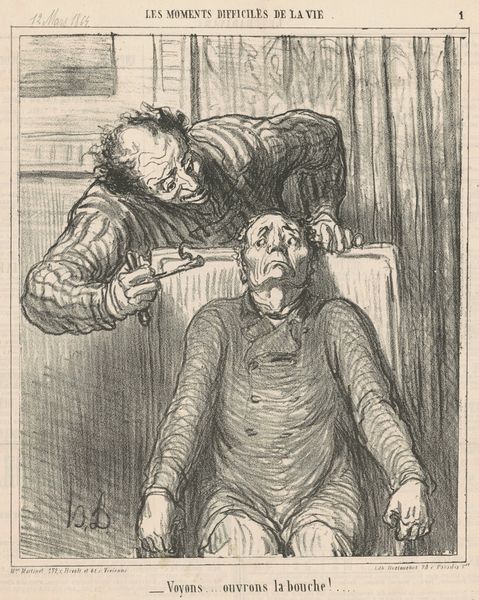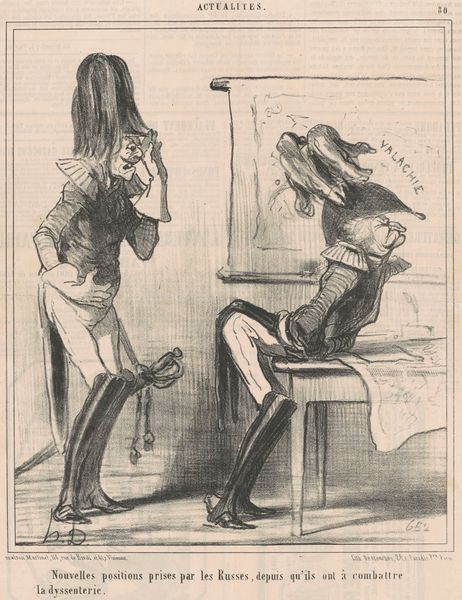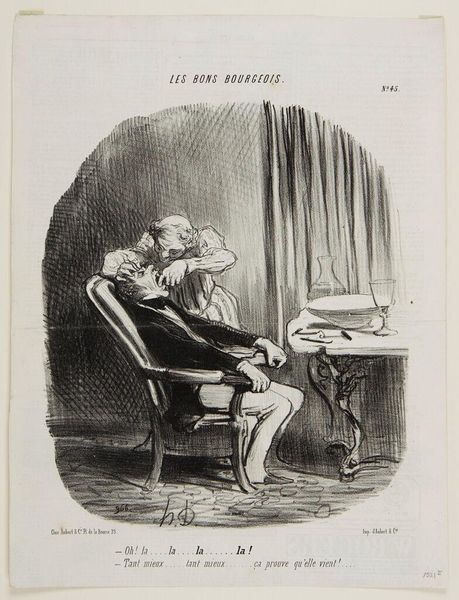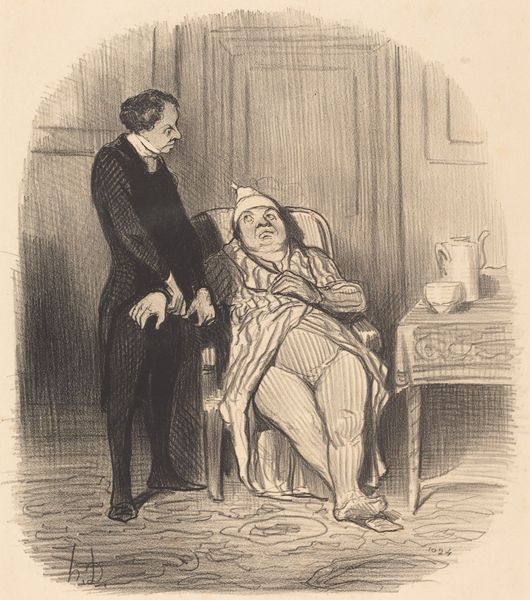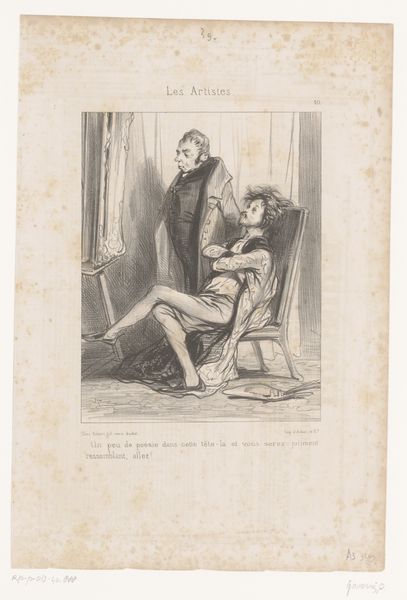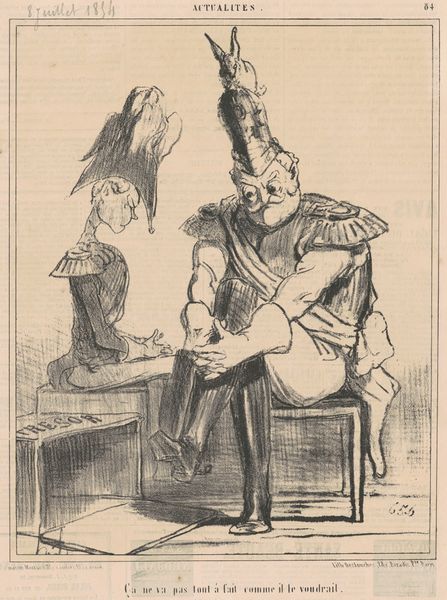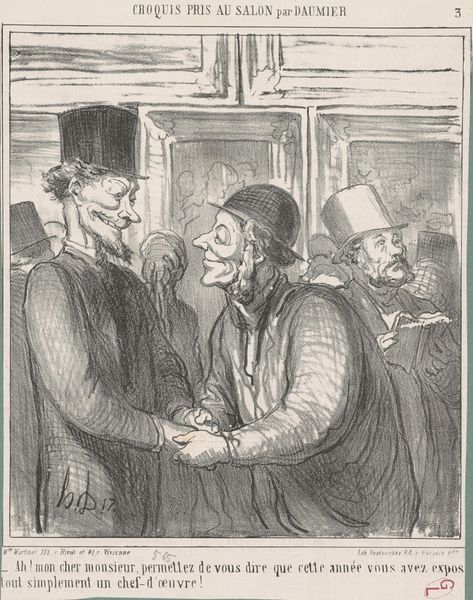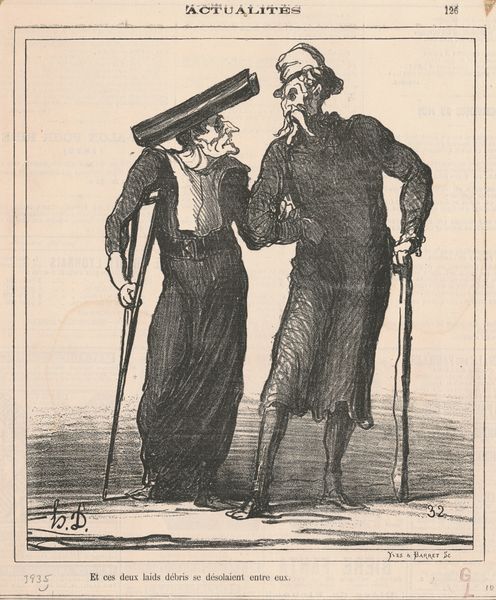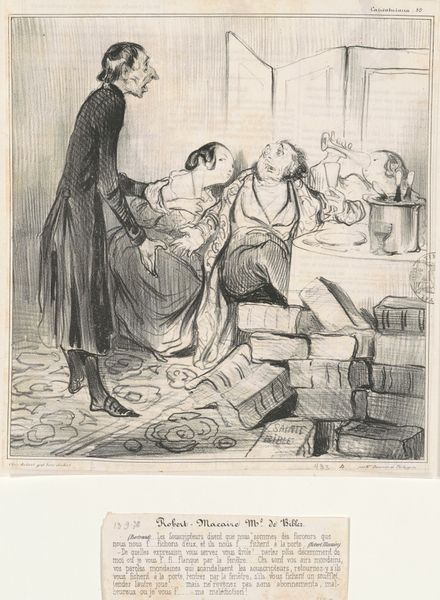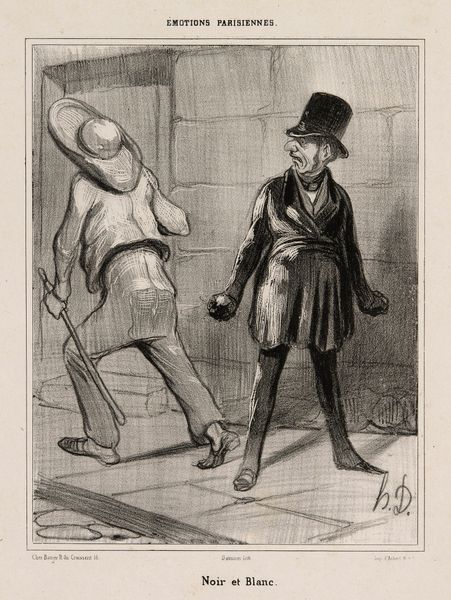
Copyright: National Gallery of Art: CC0 1.0
Curator: This is "Un Lutteur malheureux," or "An Unhappy Wrestler," by Honoré Daumier, created in 1851. It's a lithograph, showcasing his characteristic style. What catches your eye first about it? Editor: Well, it certainly has a bleak sort of humor to it, doesn't it? The exaggerated features, the obvious disparity in health between the two figures...it’s unsettling, yet darkly funny. It almost feels like a visual representation of societal inequalities. Curator: Exactly. Daumier often used his art to critique the social and political landscape of his time. Here, we see a frail wrestler being attended to by what I assume is a doctor, or perhaps a manager. The wrestler's defeat is palpable, not just physically but also emotionally. He looks utterly deflated. And look at the playbill or newspaper with "Interieur" scrawled across it at his feet! Editor: I’m wondering, does the 'interior' speak to a broader commentary on domesticity? Was Daumier suggesting that even within the supposed refuge of the home, societal struggles manifest themselves? Was he implying the pressures of industrial Paris had infiltrated the private sphere? It all screams disillusionment, really. I wonder about the physical toll of labor on working-class bodies. Curator: I completely agree. The social implications are definitely present. His lithographs were originally printed in newspapers such as *Le Charivari,* a satirical journal. What do you make of his expressive line work in conveying these tensions? Editor: It adds so much to the raw emotional impact. The scratchy lines around the wrestler's body really emphasize his frailty, that fragility. There's also a strong contrast between the shadowy rendering of the 'doctor' figure and the paleness of the wrestler. It’s all carefully orchestrated to amplify the scene’s somber tone. Curator: I agree. The realism here isn’t just about representation, but also about conveying emotion. The title adds another layer, underscoring the pathos inherent in the scene. It goes beyond just depicting an event, it evokes empathy. Editor: I keep coming back to this piece’s relevance. Daumier wasn’t simply depicting the misfortunes of a wrestler; rather, he used the body to talk about precarity and political vulnerabilities still experienced today. Curator: A powerful reminder that art can truly transcend its time. Editor: Absolutely. This lithograph feels remarkably timely.
Comments
No comments
Be the first to comment and join the conversation on the ultimate creative platform.
